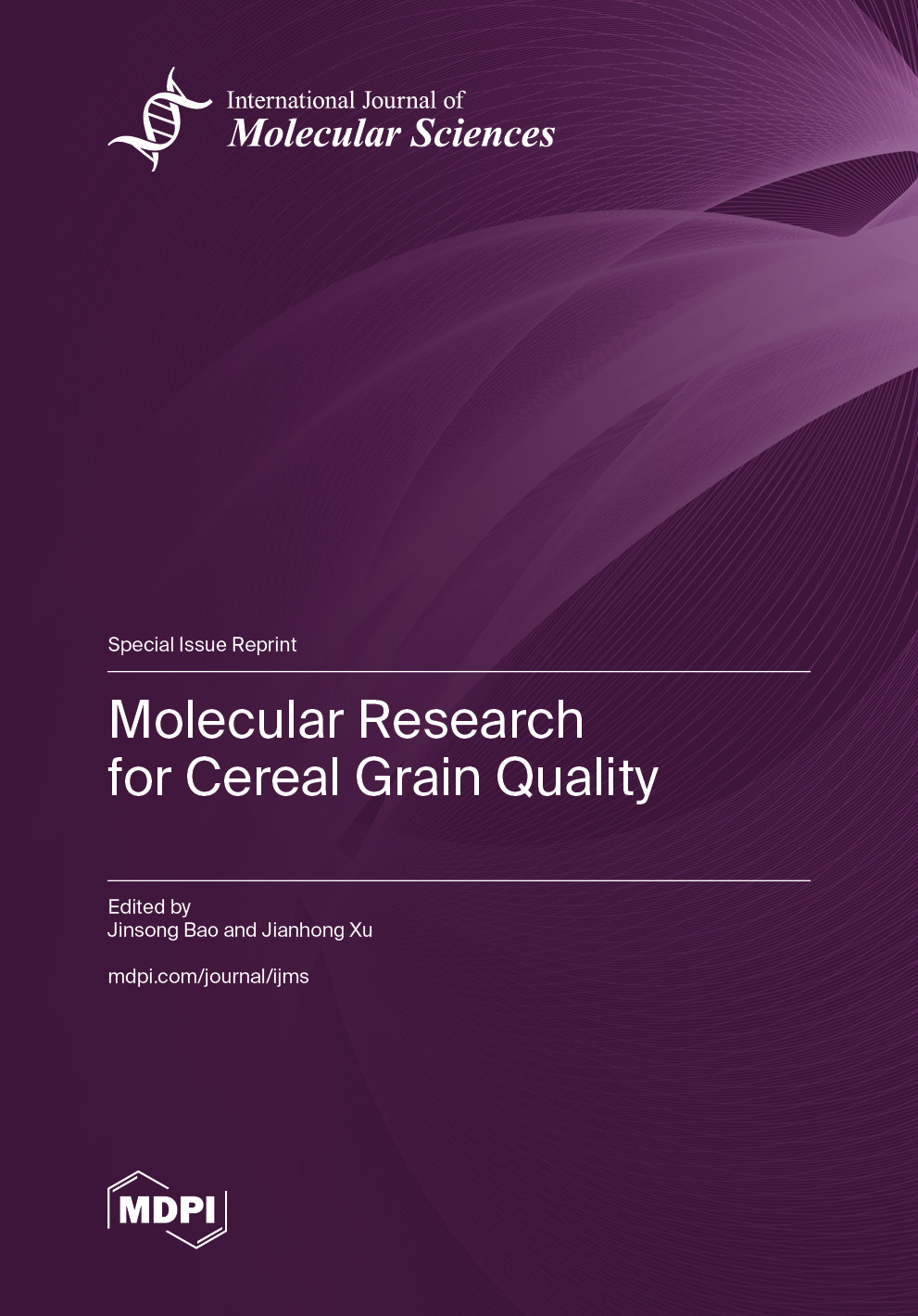Molecular Research for Cereal Grain Quality
A special issue of International Journal of Molecular Sciences (ISSN 1422-0067). This special issue belongs to the section "Molecular Plant Sciences".
Deadline for manuscript submissions: closed (30 November 2022) | Viewed by 26725
Special Issue Editors
Interests: rice grain quality
Special Issues, Collections and Topics in MDPI journals
Special Issue Information
Dear Colleagues,
While cereal production is important for food security, cereal grain quality features determine consumer acceptability and market value. With the increase in standard of living, our desire for a better life requires more production of high quality cereal foods. However, our capabilities to provide high quality cereal grain are constrained due to the limited understanding of molecular mechanisms of grain quality formation. Therefore, more molecular studies are necessary to discover the regulation mechanism underlying grain quality formation for the improvement of grain quality. This special issue aims to provide a forum on the most recent advances in the field of application of molecular tools to understand the mechanism for improvement of grain quality in any cereals.
Any papers using novel molecular tools to solve problems in cereal grain quality are welcome. The molecular tools include but not limited to molecular markers, genetic mapping, transformation, genome editing, genome selection, and other molecular biology techniques.
Prof. Dr. Jinsong Bao
Prof. Dr. Jianhong Xu
Guest Editors
Manuscript Submission Information
Manuscripts should be submitted online at www.mdpi.com by registering and logging in to this website. Once you are registered, click here to go to the submission form. Manuscripts can be submitted until the deadline. All submissions that pass pre-check are peer-reviewed. Accepted papers will be published continuously in the journal (as soon as accepted) and will be listed together on the special issue website. Research articles, review articles as well as short communications are invited. For planned papers, a title and short abstract (about 100 words) can be sent to the Editorial Office for announcement on this website.
Submitted manuscripts should not have been published previously, nor be under consideration for publication elsewhere (except conference proceedings papers). All manuscripts are thoroughly refereed through a single-blind peer-review process. A guide for authors and other relevant information for submission of manuscripts is available on the Instructions for Authors page. International Journal of Molecular Sciences is an international peer-reviewed open access semimonthly journal published by MDPI.
Please visit the Instructions for Authors page before submitting a manuscript. There is an Article Processing Charge (APC) for publication in this open access journal. For details about the APC please see here. Submitted papers should be well formatted and use good English. Authors may use MDPI's English editing service prior to publication or during author revisions.
Keywords
- cereal
- rice
- wheat
- maize
- barley
- sorghum
- millet
- molecular markers
- genome-wide association studies
- genome editing
- genome selection
- sequencing
- molecular selection
- transcriptomics
- omics
- post-translational regulation








